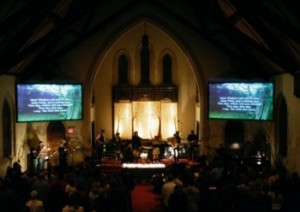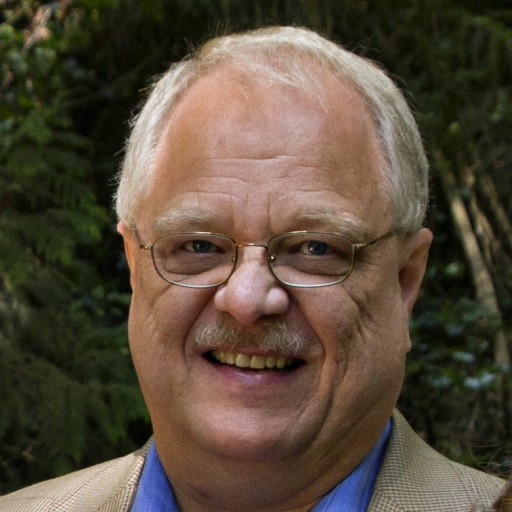Drinking from the Well, Part 1
 After many months of saying, “Someday we’ll go to Jacob’s Well,” we finally made it on Sunday. We’ve lived in Kansas City for five years, but had never been to the Westport neighborhood where Jacob’s Well is located. This was an adventure in more than one way. Our friends, Ron & Sherry, picked us up and we headed north. When we decided to do this several weeks ago, we got on the web and found that the morning gathering started at 10:30. I heard that there were more children involved on Sunday mornings, and since I’m very interested in intergenerational ministry, we didn’t even talk about going to an evening gathering.
After many months of saying, “Someday we’ll go to Jacob’s Well,” we finally made it on Sunday. We’ve lived in Kansas City for five years, but had never been to the Westport neighborhood where Jacob’s Well is located. This was an adventure in more than one way. Our friends, Ron & Sherry, picked us up and we headed north. When we decided to do this several weeks ago, we got on the web and found that the morning gathering started at 10:30. I heard that there were more children involved on Sunday mornings, and since I’m very interested in intergenerational ministry, we didn’t even talk about going to an evening gathering.
As we turned down the street on which the church building is located, we noted the bumper-to-bumper cars parked on both sides of the street. The street is not that wide to begin with. As we got to the corner we noticed signs along the street announcing that May 7th was the first day that Jacob’s Well hosted three gatherings: 9 & 11 & 5:30. We were early for the 10:30 gathering, and way early for the 11 o’clock start, so we went to Panera for rolls and coffee – well, they enjoyed the mid-morning break while I quietly observed the coffee drinkers and interrupted the conversation as needed.
When we headed back to the church building we found the streets wide open and the small parking lot mostly empty. I wondered how the neighbors respond to the traffic jam each Sunday. The Jacob’s Well leaders must constantly be looking for ways to be neighborly – to serve the community, not just clog the arteries each weekend.
The church facility was built as a Presbyterian church in 1930, according to the cornerstone. The building has been maintained, but not updated. It looked and felt like a 1930s church building. I’m currently reading When Church Became Theatre : The Transformation of Evangelical Architecture and Worship in Nineteenth-Century America. The Jacob’s Well building doesn’t feel like theater as do some churches I’ve attended. Doesn’t feel like a hotel lobby either, or a food court at the mall. This was “other” space, something I found refreshing.
Many groups of people were engaged in conversation on the front sidewalk and into the small foyer. We were handed a single 5½x8½ paper with a few announcements on it as we walked into the building. Several people were already in the worship space. We made our way toward the front and slipped into a pew about a third of the way back.
The first thing that caught my eye were the windows. They are made of colored glass with two or three Christian symbols randomly positioned on each window. The symbols appeared to be some type of decal; they were not mosaics of inlaid glass. The windows are tall with the arch at the top coming to a point. The proscenium arch matches the windows; that shape ties the whole thing together architecturally. With the high ceiling that follows the roof line, you really get the sense of transcendence, something that I’m sure the Presbyterians were striving for in the late 1920s when they approved the design.
There was a large communion table front & center on the platform with a line of candles standing as sentries over the communion elements. On the back wall of the chancel was a section about the size of a window that included the Lord’s Prayer written out in an artistic fashion. Artificial lighting is almost nonexistent in the room, so there were lots of shadows to signify the mystery of God. Two large screens, at least ten feet wide, were on the front walls.
About the time we found our pew, Ron & Sherry saw a family they knew. Then Mike King, the President of YouthFront and a friend from NTS, came by to talk for a few minutes. Slowly the place started filling up. They said that the 9 o’clock gathering was full. I’m guessing there were at least 250 at this gathering in a space designed for 350 or so. I can’t imagine how sweaty it would be without two meeting times. During the “greet your neighbor” moments, we talked with a couple from Sedalia that drive 100 miles to get to Jacob’s Well each Sunday, then 100 miles home. Jacob’s Well is doing something that many other churches are not. This couple sat with their 20-something son and his friends. Most of the folks there on Sunday were young adults, but we weren’t the oldest in the room either. There were some children, probably as many babies as elementary-aged kids. The children left the service for their own activities during the greeting time.
Right at 11 – I looked at my watch – the band started. The songs were new to me, but not the regulars at Jacob’s Well. I’m guessing the songs were written by Mike Crawford, the music leader. There were five guys in the band playing rhythm guitar, lead guitar, bass, drums, and trumpet. In addition to Mike (who also played guitar), there was a woman vocalist who stood to the side of the platform on the main floor level. Even though she took the lead vocals on several songs, she was kind of hidden in the corner.
For the last several years the “contemporary” model of worship has been heavily influenced by pentecostal forms. Not at Jacob’s Well. Few people raised their hands. No “clap offering.” No attempt to build to an emotional climax. No cheerleaders trying to get people to sing robustly. No sense that the band was performing for an audience. I noticed what was not, but I didn’t miss it. The simplicity of the worship refreshed me.
The worship order followed the four-fold pattern of classic Christianity: entrance, Word, table, dismissal. The entrance section was not highly developed in the classical sense, but it was obviously a time of gathering and praise.
That’s all the time I have this morning. I’ll continue my reflection on the next blog entry.

